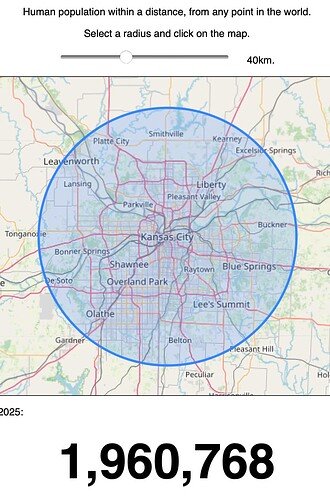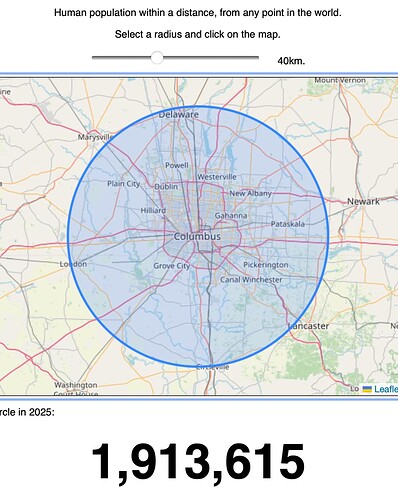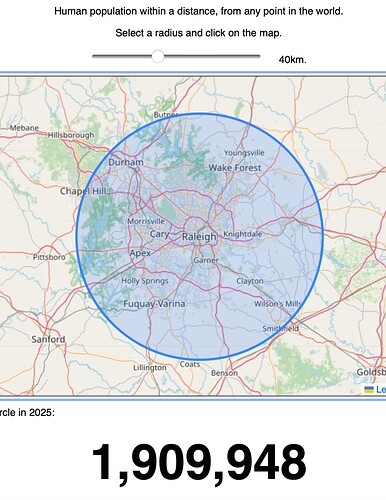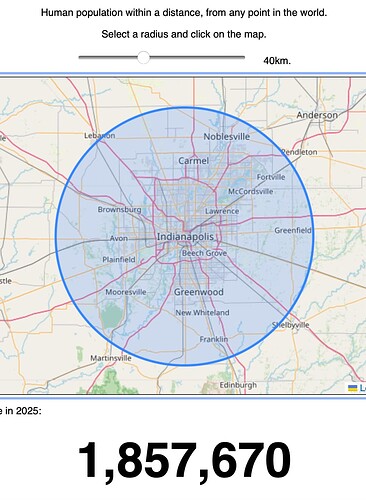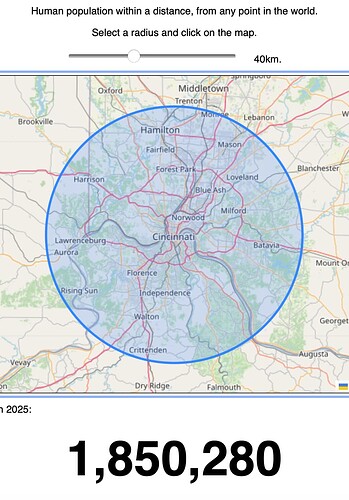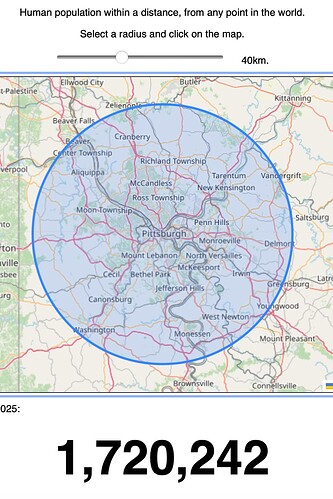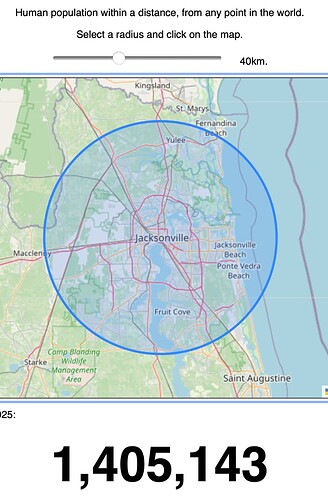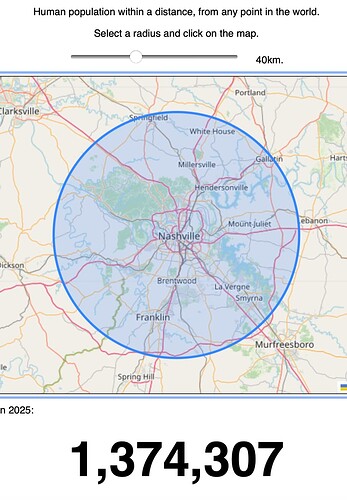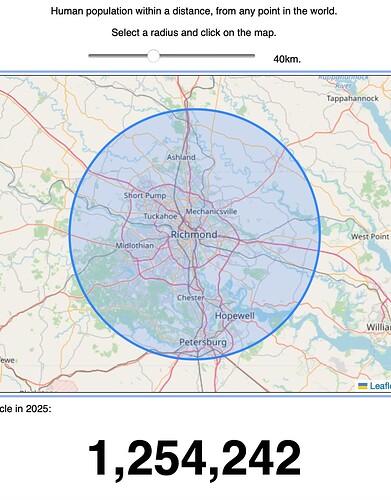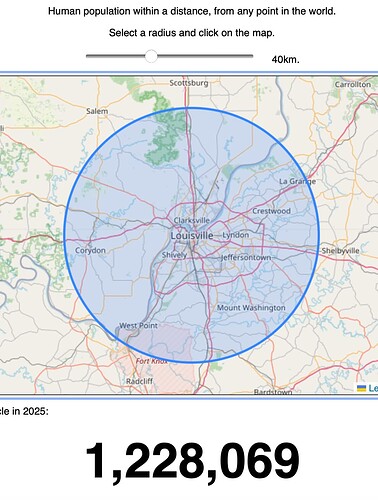any possiblilty that perhaps non-traditional family occupants will fill some of these houses…a few professional adults with no children, etc?
Clearly, when someone (let’s say) in their 80s dies, their house may very well be bought by empty nesters in their 50s. In may also be bought by a child bearing years couple who either may choose to not have kids, or haven’t had kids yet. In general, I think that data tells us that this all washes out with fewer occupants per household overall than 40 or 50 years ago.
I knew a couple with no children bought a 5 bedroom house because they needed the extra bedrooms for their home offices. So they use 3 bedrooms plus 2 others for home offices and I have seen a lot of this since Covid. It maybe waning though but even those who go into the office a couple of days a week they still want a dedicated home office space.
Folks next door to me bought a 4-bed 2ksqft house as empty nesters, paid good money for it too. They primarily live on the coast but bought the house for when they have to be in the office in Raleigh twice a week.
Nice folks, nothing against them personally, but does highlight that preferences for household space have increased over time…
So strange to me, though, that they’d prefer a freestanding house (with, presumably, a yard, and all the attendant maintenance that goes with it) to a townhouse or condo of similar size, especially for a “house in the city” they only live in part-time.
Meanwhile I look around at my house and think to myself, I can’t wait until we move and I can downsize into 400sf…
I kinda suspect your empty nesters are older Gen X, and I’m younger Gen X. We did all grow up in the suburbs, so I think for a lot of us a tract house in the burbs feels normal and right. I wonder how many decades are going to go by before the population shifts toward multi-family and urban living feeling normal and right for a meaningful proportion of society.
When my parents were first retired in their early 60s, they initially intended to retire to the Jacksonville, FL area, and the houses that they were looking at were hundreds of square feet larger than the house that they raised 4 kids in. It was ridiculous. They ended up not moving and my mother is still in the family home. My parents were justifying the larger house based on them having the things that they never previously had. For example, my mom wanted a craft room, and my dad wanted a workshop (hence the 3 car garage), etc. Then, of course, they HAD to have all of these extra rooms for when the kids and grandkids would come to visit.
Prompted by a thread I saw on city-data, I decided to go back to our population around a radius tool that we’ve talked about before, and explore some of our presumptions & comparisons.
- Population center of the Triangle. Where is it, and what is the population around some key locations in the Triangle using the same radius?
- How do we really compare to Charlotte and the Triad when using a static radius tool at the metro level instead of varying physical sizes of the the 3 metros at the MSA and CSA levels?
Typically the narrative out of Charlotte is that it’s so much bigger than the Triangle, and especially Raleigh. From Charlotte’s POV, the Triangle is often compared to the Triad. Typically the narrative coming out of the Triangle is that it’s not so much different in size than Charlotte. So, what does the radius data tell us?
The 50km radius around the intersection of Trade and Tryon in Charlotte is 2,363,762
The 50km radius around Union Square (The Capitol) in Raleigh is 2,189,718
The 50km radius around the Greensboro City Hall is 1,485,320
By the apples to apples data, the Triangle is 174,044 people smaller than Charlotte, but 704,395 people larger than the Triad.
Now, let’s look at the Triangle itself. There’s a prevailing belief that the population center of the Triangle is in near the 1-40/Wade Ave Extension intersection, but how does that compare to the radius around central Raleigh, Central Durham and the I-40/I-540 intersection?
The 50km radius around Union Square (The Capitol) in Raleigh is 2,189,718
The 50km radius around the interchange of I-40 & I-40/Wade Ave ext. is 2,177,685
The 50km radius around the interchange of 1-40 & I-540 is 2,147,637
The 50km radius around the Durham City Hall is 2,079,567
It’s important to realize that as the center of that 50km radius moves from east to west that some outlying areas fall off while others are picked up. For example, the far east center (Raleigh) leaves off Hillsborough, Mebane and Burlington, while the far west center (Durham) leaves off Clayton, Smithfield and Benson. All of the radii include what most would consider the core of Triangle Communities.
So, at a 50km radius, the data tells us that the population from a center decreases as we move each step northwestward from Raleigh to Durham, even when that center picks up and drops off population in outlying areas. If we reduce the radii from 50km to 40km the delta in population between the center being on Raleigh or Durham only increases. Instead of the spread being about 110,000, it grows to almost 210,000. Interestingly, it’s at the 40km radius that the interchange of I-40 & Wade Ave yields the largest population circle of them all at 1,996,902: supporting the idea that the population center of the Triangle is at that location.
^Update on above. If I run the 40km radius around Trade & Tryon, the population around Charlotte is 2,080,217 or only 83,315 larger than the Triangle.
If we look at the Triad, the gap only widens. 40km centered on Greensboro’s City Hall, they land at 1,095,853. That puts the Triangle 901,049 over the Triad.
For comparison to the South’s big boy, Atlanta, the 40km radius around Atlanta is 4,200,306. So much for Charlotte being Atlanta’s peer.
Thank you so very much John! ![]()
Totally awesome and cool! ![]()
![]() Thank you!
Thank you! ![]()
Bi the way, you had me at city-data! Ooooh yeah! ![]()
![]()
This type of information should really be out there for people to see. I think that’s why we lost getting a Micro Center to Charlotte. Charlotte is seen is a significantly larger metro even though the difference isn’t that big and the median income in Raleigh/Durham is higher.
I’ll bet that much of that perception is the skyline.
DING DING DING DING DING
Not even a question. People see Charlotte as NC’s “BIG CITY” because it uhhhhh LOOKS like a big city. And they’ve also gone miles ahead in public transportation than Raleigh has even “planned” to. Lite-rail has been in Charlotte for quite a few years now and only increasing.
Whatever will we do without a …looks up what a Micro Center is… computer and electronics retail chain???
I mean IKEA is just a furniture store too. Bet we want that too.
i have .3 of an acre…i love doing grass planting experiments, bird baths and feeders…snoozing on my hammock. i just look at mowing as a form of light exercise. there can be some charm or ‘therapy’ to it. guy down the street from me is a beekeeper.
So, I’m still hooked on this population radius tool and decided to compare Raleigh’s 40km radius circle to yet more cities that sometimes find themselves in conversation when talking about Raleigh. I decided to skip cities west of Mississippi and focus on ones that are reasonably close to us. Some may disagree what close means, but I am thinking about it in terms of the entire country. Hence you won’t see Salt Lake City, Austin, or Albuquerque in this comparison.
I think that some of you will be surprised by how Raleigh compares when it comes to population within that radius. In some cases, Raleigh far exceeds some that many think are comparable, while the city is more similar in radius population to cities that many consider in a league above Raleigh. For capital cities I chose the capitol building for the center of the circle, and for the others I chose either a town hall or some other substantial municipal building.
Spoiler alert: Raleigh is larger in that circle than most of the cities, and is growing much more rapidly than the 2 that are currently larger.
Feel like the Nashville one really highlights how much tall building new construction and “vibes” impact the conversation. Nashville’s MSA is huge, almost 4x the land size as the Raleigh MSA.
Yeah, Nashville’s MSA and CSA sizes are just ridiculous. For me, they were the most shocking of the radii populations. Nashville, like New Orleans and Las Vegas have a continuous flow of visitors who activate their downtowns/entertainment districts and make them seem much larger than they are.
On a side note, I never expected to see Columbus as the most comparable to Raleigh using this tool, and among this group of cities.
We’re really similar in a lot of ways. Huge academic presence, lots of companies located there (Columbus has five Fortune 500 headquarters), plenty of nearby mid-sized cities, overshadowed in the national eye by historically larger cities in their state.
And both are state capitals.
While I do love your enthusiasm, the actual City of Raleigh currently has no headquarters for Fortune 500 companies, very sad I know… ![]()
![]()
